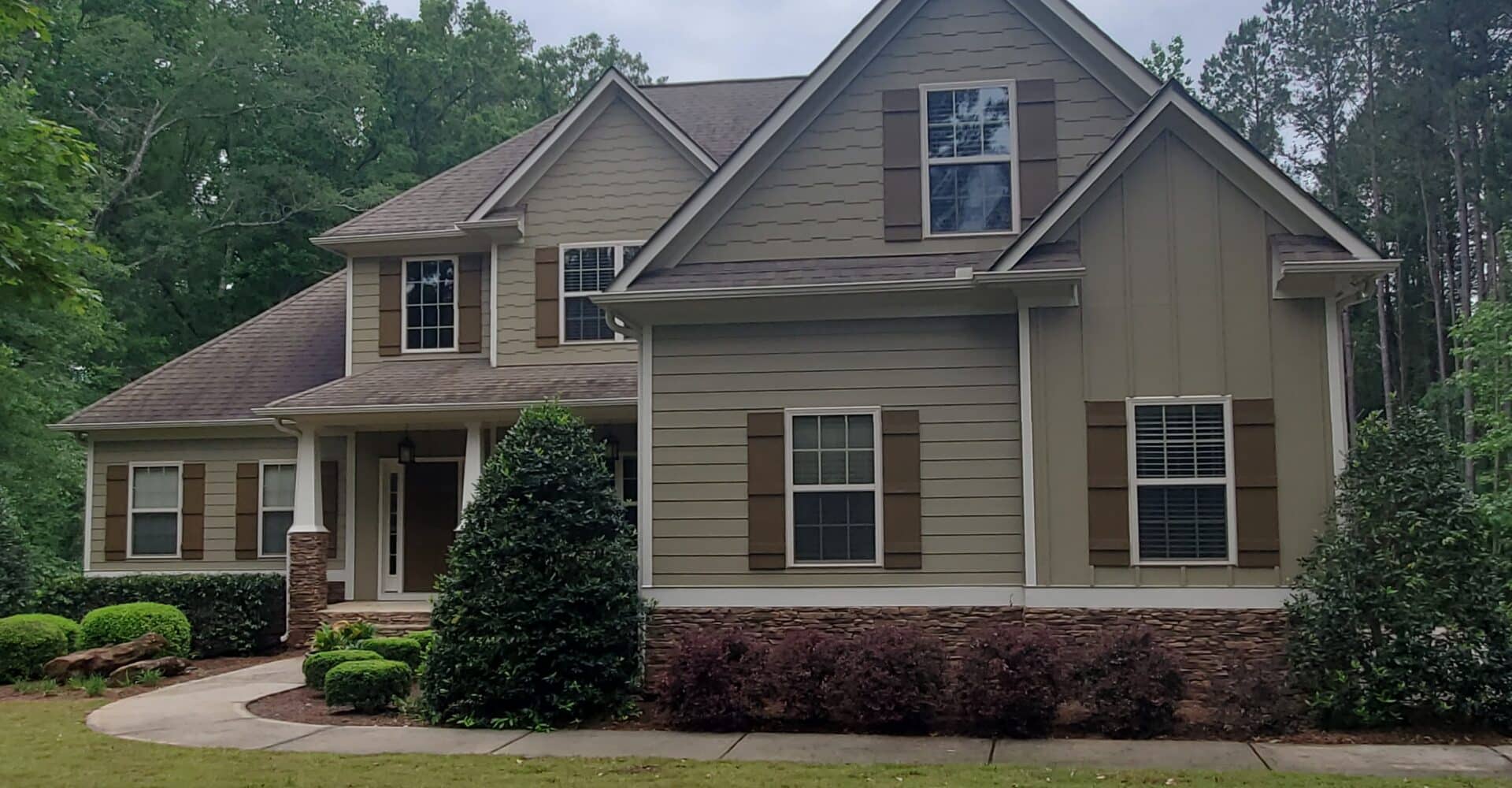The exterior appearance of a house speaks volumes about its maintenance and care. One of the most prominent features of a home’s exterior is its paint, which enhances its aesthetic appeal and protects it from the elements. However, paint can degrade and fail over time, and there are several reasons why this may happen. In this blog post, we will discuss some of the most significant factors that can cause exterior house paint to degrade and fail and what can be done to prevent it.
Moisture in Wood When Painted
If wood surfaces are not adequately dried before painting, the moisture can cause paint to peel, crack, or bubble. Before applying paint, it is crucial to ensure that the wood is thoroughly dry, both on the surface and within. If the wood is saturated with moisture, it may take several days of sunny or windy weather to dry it properly.
Unfinished Siding Exposed to Sunlight
Exposing unfinished wood siding to prolonged sunlight can degrade the wood surface, making it difficult for paint to adhere correctly. It is essential to protect unfinished wood from prolonged sunlight exposure and, if needed, lightly sand or power wash the surface to remove any degraded wood before painting.
Weather Conditions
Extreme weather conditions, such as high humidity or excessive sunlight, can have a detrimental effect on exterior house paint. High humidity can cause paint to degrade due to moisture absorption, while prolonged exposure to sunlight can cause paint to fade and break down due to the damaging effects of UV radiation. It is crucial to choose a paint resistant to weather conditions and consider the local climate when painting the exterior of a house.
Uncleaned Wood Siding
Painting over dirty wood siding can lead to paint failure and an unsightly appearance. It is essential to thoroughly clean the wood siding before painting using a brush with brass bristles, water, and detergent. Avoid using iron or steel brushes, which can stain the wood and affect paint quality.
Temperature Factors
Temperature also plays a significant role in the success of exterior paint. Painting in temperatures below the recommended range can result in poor paint adhesion, while painting in temperatures that are too hot can cause the paint to dry too quickly, leading to surface defects. It is crucial to follow the manufacturer’s recommendations for temperature requirements when applying paint and allow sufficient time for drying before exposure to adverse weather conditions.
Humidity During Painting
Humidity levels during painting can affect the paint’s drying and curing process. Water-based paints require proper water evaporation for curing, and high humidity can hinder this process, resulting in paint failure. Similarly, oil-based paints can also be affected by high humidity levels. It is essential to choose the right weather conditions, such as low humidity, for painting and ensure proper drying and curing of the paint.
Several factors can cause house exterior paint to degrade and fail, including moisture in wood, unfinished wood exposed to sunlight, weather conditions, uncleaned wood siding, temperature factors, and humidity during painting. To ensure a long-lasting and visually appealing exterior paint job, it is crucial to properly prepare the surfaces, choose high-quality paint, follow the manufacturer’s recommendations for temperature and humidity requirements, and consider the local climate. By taking these precautions, homeowners can protect their investment and enjoy a beautiful and durable exterior paint finish on their homes.

